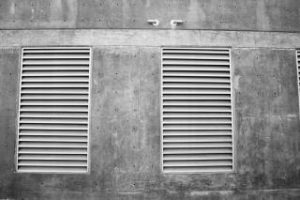The Importance of Ventilation in a Commercial Space
Sufficient airflow helps your workers stay healthy and alert, and keeps your customers and guests comfortable, so they’re inclined to stay longer. Because the Delaware and Maryland area climate means we keep our windows closed for much of the year, achieving good airflow in a modern commercial building requires a carefully designed ventilation system.
Enjoy Healthier Air and Fewer Maintenance Issues
One of the most important benefits of good airflow is better indoor air quality. Office spaces are especially prone to a buildup up harmful airborne chemicals known as volatile organic compounds (VOCs). These are produced by carpeting, paint, photocopy machines, printed materials, cleaning supplies, and many other common materials and substances. The HVAC system’s air filter can’t trap these chemicals. They need to be removed from the building through either open windows or the ventilation system.
Open windows aren’t always practical. What’s more, modern commercial buildings are typically built to be airtight. That’s great for energy efficiency, but the lack of air leaks limits airflow through the building. To ensure clean indoor air, you need a balanced ventilation system that draws out the stale air from every part of your building while also bringing in an equal amount of fresh air.
VOCs, mold spores, and other air contaminants are among the main causes of sick building syndrome. Ensuring proper airflow in your building protects the health of everyone working there so your business can stay productive.
The right amount of airflow also protects your building from damage. Restrooms, break room sinks, office plants, and even people breathing all add humidity to the air. Without enough airflow, this moisture accumulates and can encourage mold growth. Mold not only produces spores that irritate the lungs, it also eats away at the wood, drywall, and carpeting in your building.
Healthy humidity levels help you cut energy costs, too. Less than optimal humidity levels can leave you feeling chilly in winter and sweltering in summer. With correct humidity levels, you can keep the heat lower and the air conditioner temperature higher without hearing complaints from your employees and customers.
Your Ventilation Options
There are several ways to improve the airflow in your building. One of these is with exhaust fans in your restrooms and cooking areas. These remove odors and excess humidity and are typically wired to run whenever the lighting is on or the space is occupied. While they help, they’re not enough by themselves. Exhaust fans freshen the air in only a limited area and don’t bring in fresh air.
For continuous airflow to every part of your building, a balanced ventilation system is a more effective choice. These systems consist of exhaust fans in areas prone to pollutant buildup and supply air fans in regularly occupied spaces such as offices and areas where customers are served.
The use of powered fans, rather than passive ventilation devices such as roof turbines, gives you full control over when you run the system. You won’t be dependent on weather conditions for sufficient airflow.
Using a heat recovery ventilation (HRV) or energy recovery ventilation (ERV) will let you minimize the energy loss caused by removing conditioned indoor air and bringing in fresh, unconditioned outdoor air.
At the center of a HRV sits a heat exchanger. In winter, this device captures warmth from the outgoing stream of indoor air and moves it to the incoming outdoor air steam. In summer, it does the opposite by taking heat out of the incoming air and sending that heat back outdoors. An ERV moves not only heat, but also humidity between air streams to minimize the amount of moisture brought into the building.
Our goal is to help educate our customers about Plumbing, HVACR, Fire Protection, and Alarm Systems in Mechanical, Commercial, and Residential settings. For more information about ventilation and to view projects we’ve worked on, visit our website!
Photo Credit: Jay Mantri/Pexels








